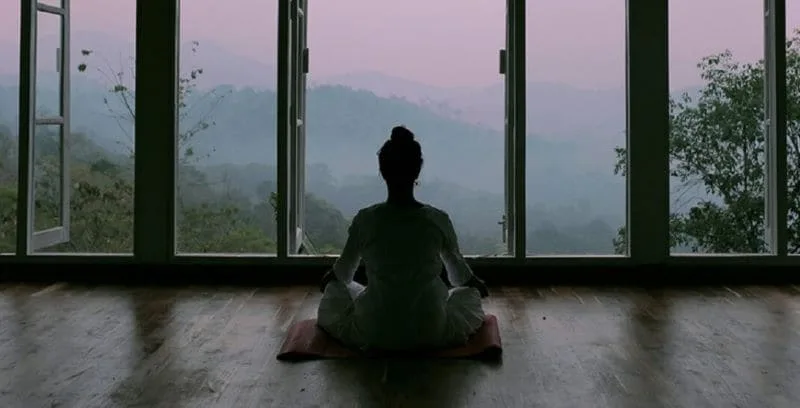
The Transformative Power of Hot Yoga: Enhancing Physical and Emotional Well-being
In recent years, hot yoga has gained tremendous popularity as a unique and challenging form of exercise. The combination of traditional yoga postures and a heated environment provides numerous advantages that extend beyond physical fitness. Hot yoga not only promotes flexibility, strength, and cardiovascular health but also offers a transformative experience for the mind and emotions. In this post, we will explore the advantages of hot yoga health benefits and its profound impact on both physical and emotional well-being.
- Enhanced Physical Fitness: Hot yoga is practiced in a room heated to around 95-105°F (35-40°C) with high humidity levels, intensifying the benefits of the practice. Here’s how hot yoga contributes to your physical health:
a) Increased Flexibility: The heat helps relax the muscles, enabling practitioners to deepen their stretches and improve flexibility more effectively than in a non-heated environment.
b) Improved Strength: Hot yoga incorporates a series of challenging poses that engage and strengthen various muscle groups. The elevated temperature stimulates blood flow, delivering oxygen and nutrients to muscles, promoting growth and toning.
c) Cardiovascular Conditioning: The heat in hot yoga raises your heart rate, providing a cardiovascular workout similar to that of a low-impact aerobic exercise. This strengthens your heart, improves circulation, and enhances overall cardiovascular health.
- Detoxification and Cleansing: The profuse sweating induced by hot yoga promotes detoxification, flushing out toxins and impurities from the body. Sweating helps unclog pores, leading to clearer and healthier skin. Moreover, increased blood circulation during hot yoga aids in the elimination of metabolic waste and supports the functioning of vital organs.
- Stress Relief and Emotional Well-being: Beyond its physical benefits, hot yoga has a profound impact on emotional and mental well-being. Here’s how hot yoga contributes to your emotional health:
a) Stress Reduction: The meditative aspects of hot yoga, combined with the heat, create a unique environment that promotes relaxation and stress relief. The focus on breath control and mindfulness helps quiet the mind, reducing anxiety and promoting mental clarity.
b) Emotional Release: The heat in hot yoga can act as a catalyst for emotional release. As you delve deeper into your practice, buried emotions may surface and be released through the combination of physical movement, deep breathing, and the supportive environment of a hot yoga class.
c) Increased Mindfulness and Self-Awareness: Hot yoga cultivates mindfulness and self-awareness as you navigate the challenging poses and intense heat. By paying attention to the present moment, you become more attuned to your body, thoughts, and emotions, fostering a deeper connection with yourself.
Hot Yoga Health Benefits
- Preventative Approach to Health: Hot yoga offers a proactive approach to maintaining your health. By consistently practicing hot yoga, you can strengthen your body, boost your immune system, and enhance overall well-being. This preventive approach may reduce the need for medications to manage certain health conditions.
- Improved Cardiovascular Health: Regular hot yoga practice can have a positive impact on cardiovascular health. The combination of physical exertion and the heated environment helps lower blood pressure, improve circulation, and increase heart strength. By promoting a healthy cardiovascular system, hot yoga may potentially reduce the reliance on medications for managing cardiovascular conditions.
- Weight Management and Metabolic Health: Hot yoga is an excellent tool for weight management and improving metabolic health. The high-intensity workout, combined with the heat, accelerates calorie burn, promotes fat loss, and enhances metabolism. As a result, maintaining a healthy weight and managing metabolic conditions may be possible without resorting to medications or medical interventions.
- Stress Reduction and Mental Well-being: Chronic stress can have a significant impact on our overall health, leading to various physical and mental ailments. Hot yoga serves as a powerful stress management tool, reducing cortisol levels and promoting a sense of calm and relaxation. By incorporating hot yoga into your routine, you may find that you can better manage stress, reducing the need for stress-related medications and their associated healthcare resources.
- Improved Joint and Muscular Health: Hot yoga’s heat enables deeper stretching and improved joint mobility, which can be particularly beneficial for individuals with conditions such as arthritis or chronic pain. By regularly practicing hot yoga, you may experience reduced pain and inflammation, potentially minimizing the need for pain medications or extensive healthcare interventions.
- Enhanced Mental and Emotional Resilience: Hot yoga provides an opportunity to cultivate mental and emotional resilience. The practice encourages mindfulness, self-awareness, and the development of coping mechanisms for dealing with life’s challenges. By nurturing mental and emotional well-being through hot yoga, you may find that you require fewer medications or therapeutic interventions to manage anxiety, depression, or other mental health conditions.

Reducing Reliance on Medications and Healthcare Resources
One of the remarkable aspects of hot yoga is its potential to positively impact individuals’ health and well-being, often leading to reduced reliance on medications and healthcare resources. Let’s explore a few real-life examples of how hot yoga has made a difference:
Testimonial 1: Managing Chronic Pain
Jennifer, a regular hot yoga practitioner, had been struggling with chronic lower back pain for years. She had been taking pain relievers daily and had even considered surgery as a last resort. However, after a few months of dedicated hot yoga practice, Jennifer noticed a significant improvement in her pain levels. The heat and stretching in the hot yoga room helped alleviate muscle tension and increase flexibility. As a result, she gradually reduced her reliance on pain medications, ultimately eliminating them from her daily routine.
Testimonial 2: Lowering Blood Pressure
Michael, a middle-aged man with hypertension, was on multiple medications to control his high blood pressure. Concerned about the long-term side effects of these drugs, he decided to complement his medical treatment with hot yoga. Regular practice led to improvements in his cardiovascular health. Over time, his blood pressure readings became more stable, and with the guidance of his healthcare provider, he was able to reduce the dosage of his medications. Michael now maintains his blood pressure through a combination of yoga and a healthy lifestyle.
Testimonial 3: Easing Anxiety and Depression
Megan, a young professional, had been struggling with anxiety and depression, leading to a reliance on antidepressant medications and regular therapy sessions. She discovered the mental and emotional benefits of hot yoga, which provided her with a sense of calm and focus. Megan found that her anxiety episodes reduced in frequency and intensity. As she continued her practice, her therapist noticed positive changes, eventually leading to a gradual reduction in her medication dosage.
These testimonials reflect the transformative power of hot yoga in people’s lives. While individual experiences may vary, these stories highlight the potential of hot yoga as a complementary approach to improving physical and mental health. It’s important to note that anyone considering changes to their healthcare routine should consult with their healthcare provider to ensure that it aligns with their specific needs and conditions.
By sharing these real-life success stories, we hope to inspire you to explore the benefits of hot yoga and its potential to enhance your overall well-being.

The History of Yoga and the Emergence of Hot Yoga
Yoga is a centuries-old practice with its roots deeply embedded in ancient Indian culture. Understanding the history of yoga can shed light on how hot yoga, a contemporary variation, came into existence.
Ancient Origins of Yoga
Yoga’s origins can be traced back over 5,000 years to the Indus Valley civilization. It was initially developed as a holistic approach to achieving balance and harmony in the body, mind, and spirit. Ancient yogis observed the natural world and its connection to human well-being, inspiring the development of yoga postures, meditation, and breathing techniques.
Evolution of Yoga
Over time, yoga evolved, giving rise to various schools and traditions. These included Hatha Yoga, which emphasized physical postures (asanas) and pranayama (breathing exercises). Hatha Yoga served as a foundation for many modern yoga styles.
The Birth of Hot Yoga
The concept of practicing yoga in a heated room can be attributed to Bikram Choudhury, an Indian yoga teacher, in the 1970s. He developed what is now known as Bikram Yoga, consisting of a specific sequence of 26 postures and two breathing exercises, all conducted in a room heated to around 105°F (40.6°C). Bikram believed that the heat helped to increase flexibility, reduce the risk of injury, and promote detoxification.
Popularity and Variations
Bikram Yoga gained popularity rapidly, leading to the emergence of various hot yoga styles and adaptations. Today, you can find styles like Vinyasa, Power Yoga, and Hot Pilates practiced in heated studios worldwide. Each style has its unique approach, but they all share the common element of a heated environment to enhance the yoga experience.
The Fusion of Ancient Wisdom and Modern Innovation
Hot yoga represents a fusion of ancient yogic wisdom with modern innovation. It retains the fundamental principles of yoga while adapting to the needs and preferences of contemporary practitioners. The combination of heat and yoga postures in hot yoga classes continues to attract individuals seeking physical and mental well-being.
By understanding the historical roots of yoga and the evolution of hot yoga, practitioners can gain a deeper appreciation for this transformative practice.














































